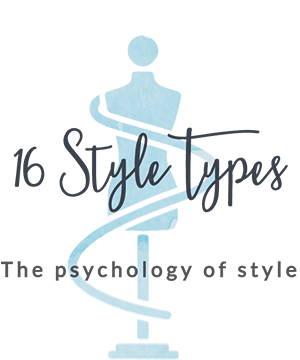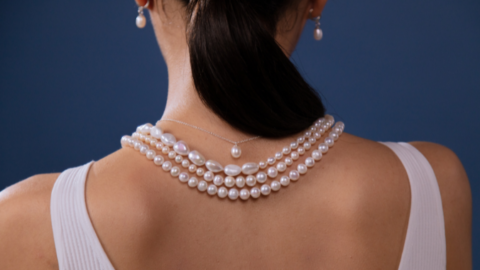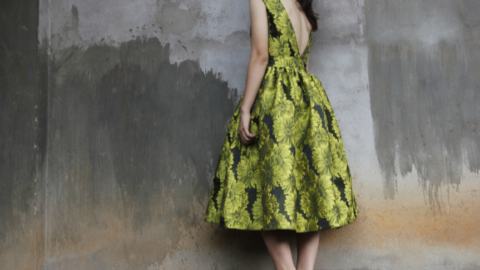Now this one is a fascinating topic! In this article and video, we’re going to discuss how to decide what the last letter of your four-letter type code might be: whether you prefer Judging (or “J” for short) or Perceiving (or “P” for short).
This topic is that generates a lot of discussion in corporate workshops (Jill runs leadership workshops where participants sometimes complain that not enough time is spent on this aspect of personality development as it is so important and interesting!), and it’s something that we all have experience with, whether we know it or not.
You see, the last letter of your type-code, J or P, is about how you approach life.
In the world of psychological type, there are two approaches to life – Judging and Perceiving.
Those who prefer Judging
Those with a preference for Judging (J) like to plan their work and work their plan. Providing organization and structure to any endeavor is a calling for Judging types. While not all Judging types organize for the fun of it, they are attracted to projects, situations, spaces and places where there is a reason for order.
Extreme examples of environments where Judging is at its most obvious and beautiful are tax offices (where filing systems are crucial since penalties are substantial) and operating rooms (where disarray can be fatal), although you will find examples of the order and structure that Judging brings in many environments, from florists to forensics.
People who prefer J tend to believe that work should come first so that they can then be free to play. A great meeting, Judging types might say, is a planned meeting.
The Judging attitude describes what that person shows to the external world. Internally they may experience themselves as flexible, adaptable, and open to new information.
Those who prefer Perceiving
Those with a preference for Perceiving (P) find that planning can get in the way of living life to the fullest. Perceivers seek to be open and spontaneous as they adapt to what comes their way, and they enjoy environments that call for flexibility.
Extreme examples where Perceiving is at its most obvious and glorious are journalism (where skilled reporters are open to late-breaking developments) and building renovation or repair (where you can’t be completely certain what the job will entail and need to be open to what you discover), although you will find examples of the flexibility and openness that Perceiving brings in many situations, from teaching to tattooing.
People who prefer P like play to be a part of their work—they try to make life and work more fun. Meetings that are best, say Perceivers, are those that deal with whatever is needed to get the job done.
The Perceiving attitude describes what that person show to the external world. Internally they can experience themselves as planful, scheduled and decisive.
A Snapshot of Judging and Perceiving
We created the following infographic as a way to summarize some key differences in how those who prefer J approach life and how those who prefer P approach it. Copyright 16styletypes.com.
Remember this is about natural preference vs learned behavior!
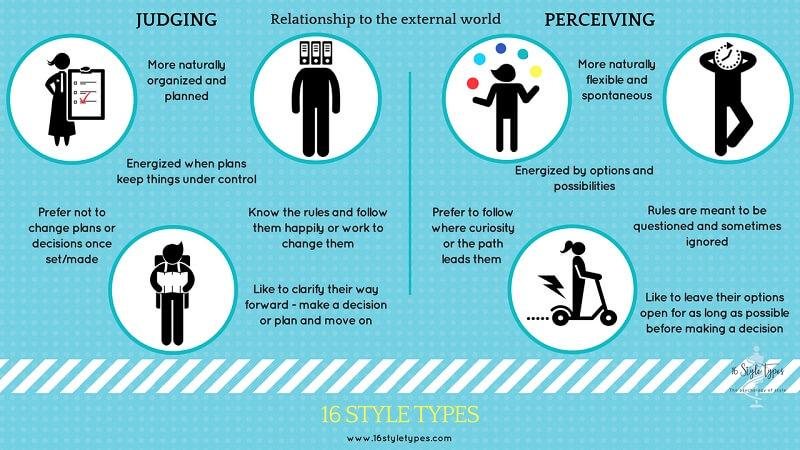
What J and P are not
There are a number of myths and misconceptions about J and P, and the words themselves don’t help in dispelling these myths. Perhaps if Myers and Briggs were alive today, they would re-think the words ‘Judging’ and ‘Perceiving’ for the labels they have given this aspect of psychological type!
And it was indeed Myers and Briggs who developed this aspect of psychological type – interesting to note that CG Jung, the originator and author of Psychological Types, did not describe judging or perceiving in this way. Myers and Briggs, in the development of the instrument the Myers Briggs Type Indicator® (MBTI®), came up with this last part of the four-letter type code.
So it’s important to note that Judging in this context does not mean being judgmental, but wanting to come to closure (judgments or assessments) on things.
And Perceiving does not imply being more perceptive, but the enjoyment of searching for more options (the act of perceiving, or taking on board, information).
It’s also worth noting that we all use both Judging and Perceiving as we live our day-to-day life – it’s impossible not to use both, the world of work (and of simply living) requires us to be both planful and responsive to our environment, to be structured in some ways and flexible in others. Nobody is, therefore, a “pure” J or P.
But within the context of psychological type, we distinguish between an attitude we prefer, that we lean towards, and are most comfortable with.
Watch The Video
In this video, Jill and Imogen discuss Judging and Perceiving – including some fascinating aspects of planning that are often the bone of contention amongst people who have very different ways of approaching tasks and time!
An Added Layer of Complexity
If you are interested in the theory of psychological type, you may find it interesting to note that J and P are also used as “signposts” to indicate another element of your four-letter type code: Judging ‘points to’ the decision making functions of Feeling and Thinking, whilst Perceiving ‘points to’ the information gathering functions of Sensing and iNtuition.
This concept has to do with the sophisticated ‘layering’ nature of psychological type and the way in which our psychological type develops over time. This is part of the concept of Type Dynamics – read more about that here.
How Others See and Experience Me
Because J or P describe only what function and attitude you use in the external world, this gets into the territory of how others experience us. J or P does not describe what our internal experience of being ourselves is, and this is where psychological type gets very interesting! It’s also why it is one of the most sophisticated and intriguing systems of personality that exist – there’s more to type than meets the eye!
How others can experience J’s
If you have a preference for Judging, others will experience this aspect of your personality and be impacted by this element of what makes you, you. J types often seem quite decisive and task-orientated, and others can experience them as being planful and wanting things organized and decided.
J’s naturally seek closure and prefer not to have too many open questions or things left open-ended, and are often uncomfortable in situations with unrelieved ambiguity. Others can experience them as wanting things ‘done and dusted’.
How others can experience P’s
If you prefer Perceiving, others will experience this part of who you are, and ‘bump up against’ this aspect of your personality. P types often come across as being easy going, and flexible, and others can experience them as being adaptable and wanting things to be open-ended and left undecided.
P’s naturally seek options and prefer not to close things off too quickly, leaving room for new and emerging information (which could change everything!). Others can experience them as being hard to ‘pin down’.
I’m This There and That Somewhere Else
It can sometimes be that people believe they are a J in one world (for example, at work), and they are a P in another world (for example, at home or on holidays). In the world of psychological type, this constitutes a common misconception, and when you understand psychological type at a deeper and more thorough level you realize how unnecessary and wrong this misguided belief is.
Rather than having “turned into” your opposite, what is more likely to be happening is that you are engaging in activities that give you psychological balance. We all do both J and P: every one of us accesses Judging behavior and Perceiving behavior, the world simply requires that we do. That does not mean that we prefer both Judging and Perceiving.
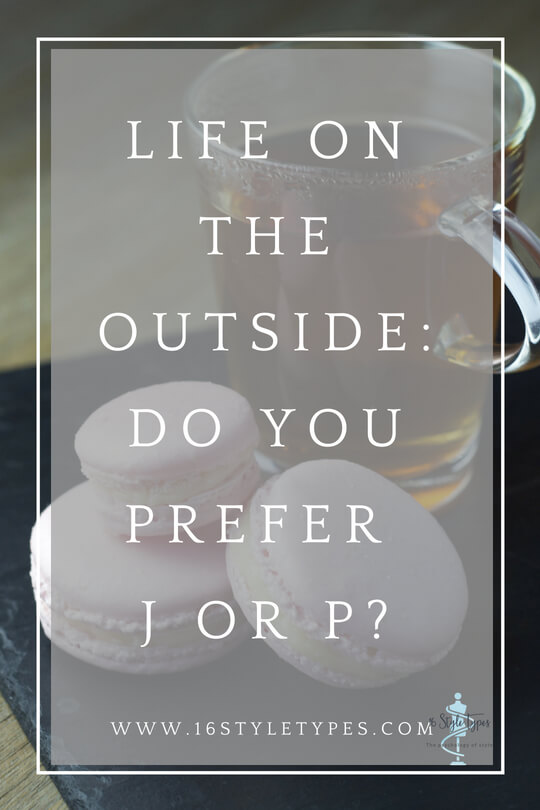
What’s Your World?
If you are yet to discover your four-letter type code, now is a wonderful time to discover your style type and explore more about your approach to taking in trusted information and making assessments – all part of your authentic and true style pathway.

